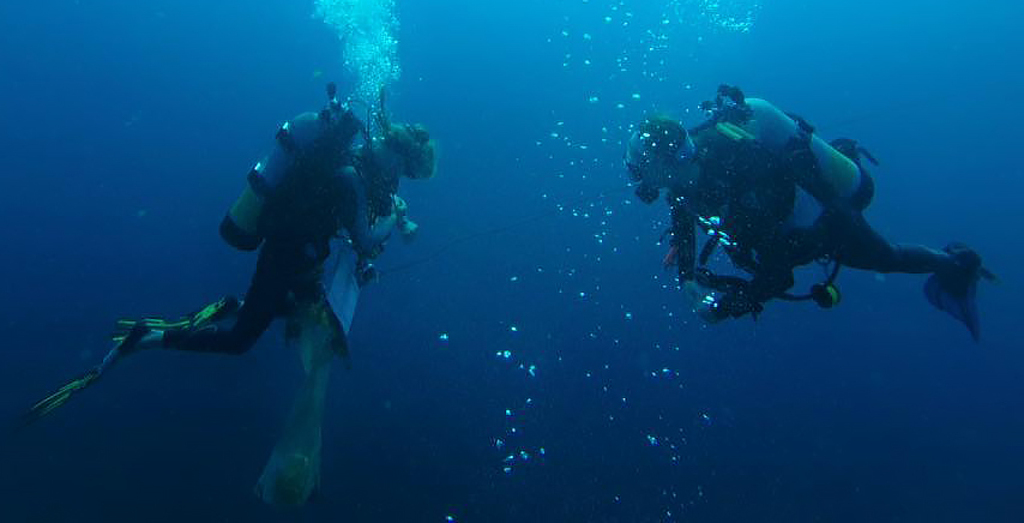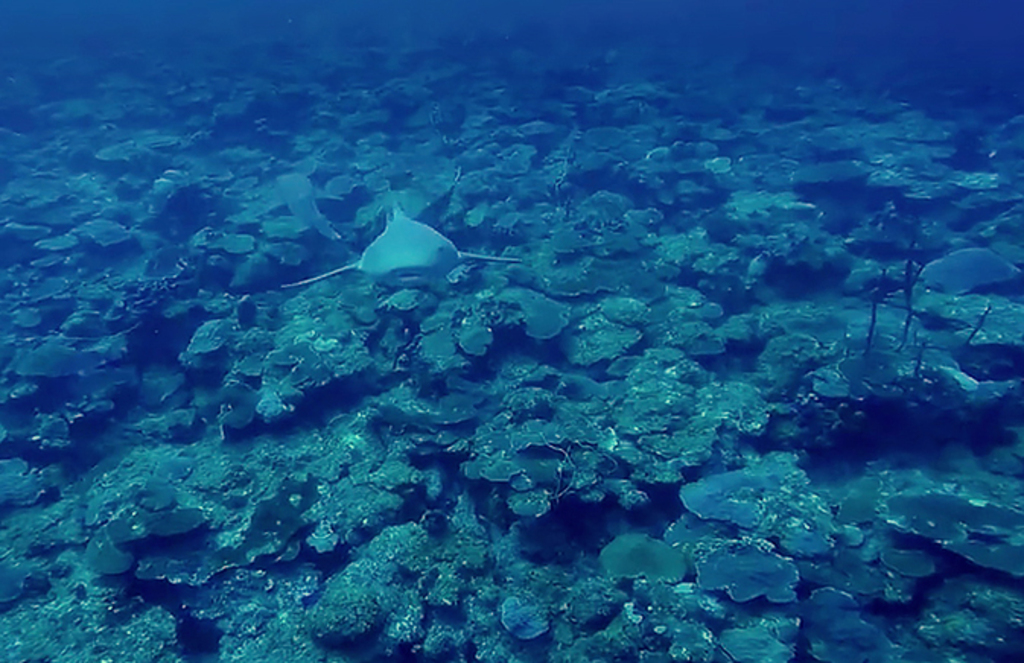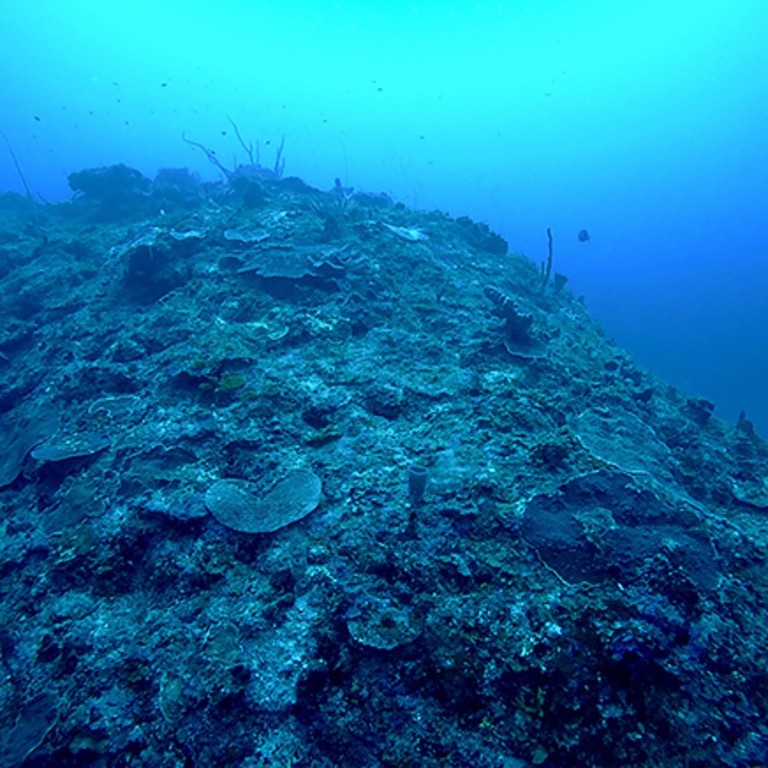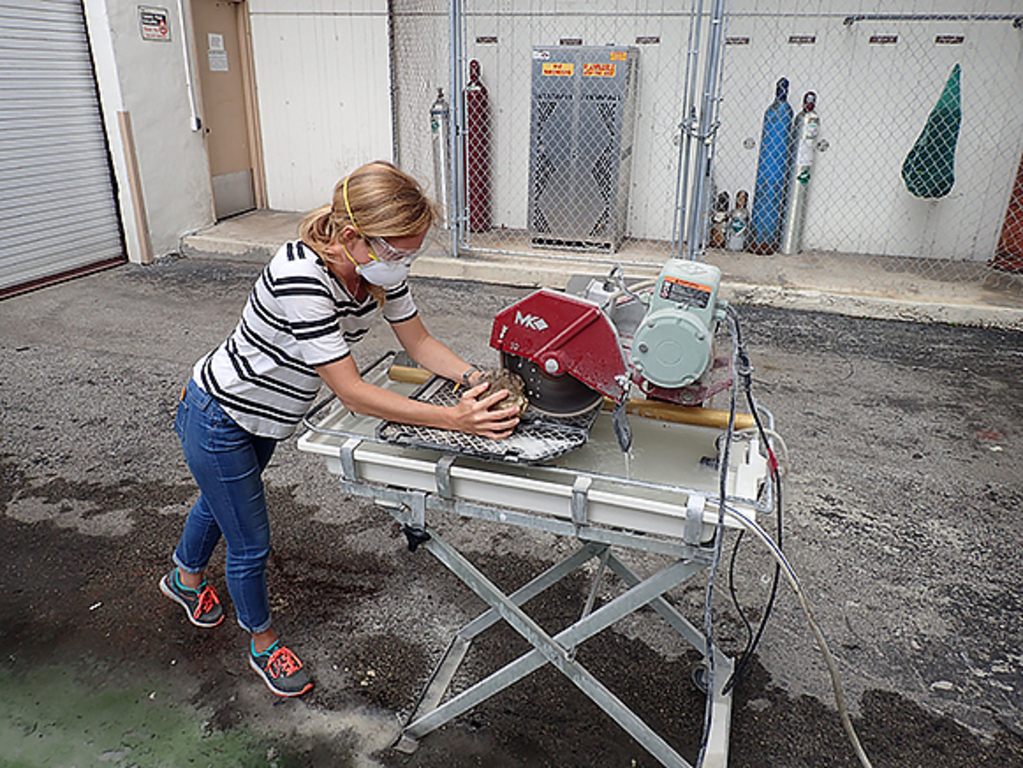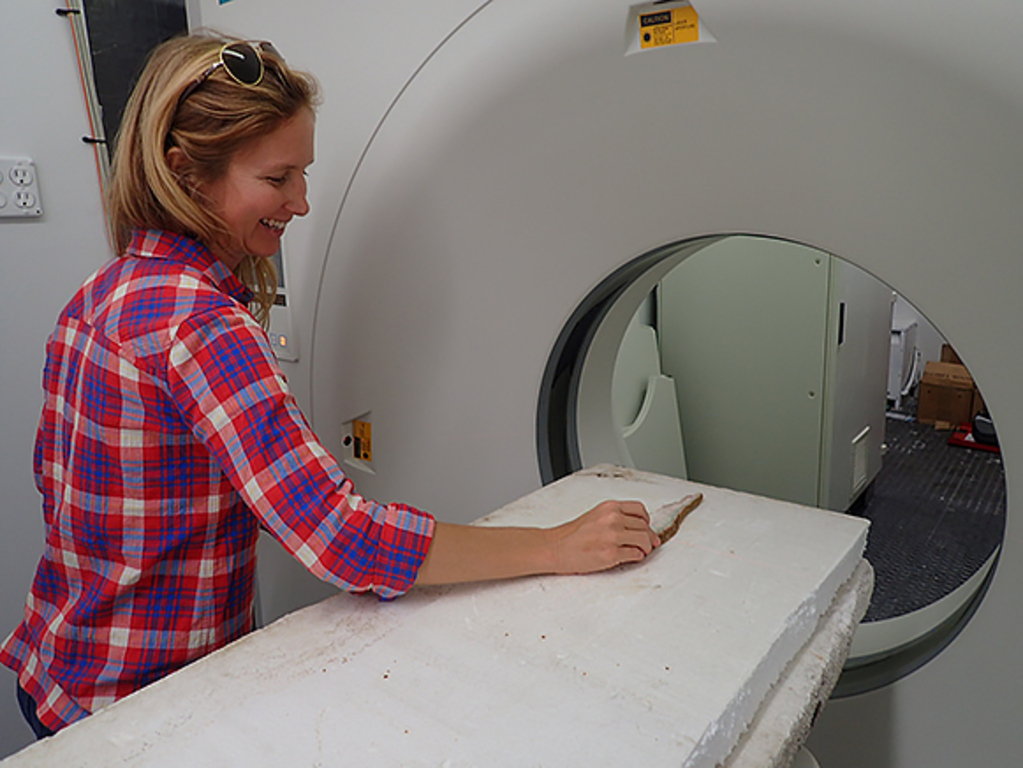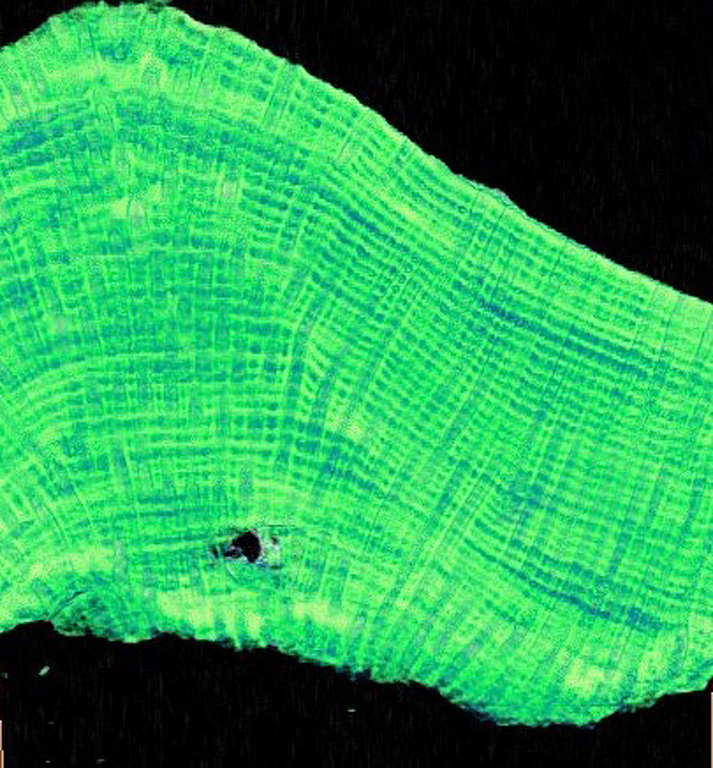Behind the science:
Growth rates of Porites astreoides and Orbicella franksi in mesopho...
2018, March 26
Posted by Veronica Radice
Fields
Disturbances
Ecology
Physiology
Focusgroups
Scleractinia (Hard Corals)
Locations
US Virgin Islands
Platforms
SCUBA (open-circuit or unspecified)
“Growth rates of reef-building corals across shallow to mesophotic depths in US Virgin Islands”
What was the most challenging aspect of your study (can be anything from field, lab to analysis)?
Accessing our field sites was definitely a big challenge. Our closest sites was about thirteen miles offshore so we were heavily dependent on weather; and because all of our sites required technical diving, having enough personnel available who could complete the dives was not always easy – especially if the weather was rough! We were also limited by the amount of information available for the northern Puerto Rican shelf in terms of bathymetry, habitat maps and habitat suitability models to guide us in where to look for corals samples that would yield quality growth data. Fortunately, this work, along with ongoing studies at the University of the Virgin Islands and the NOAA NCCOS Marine Spatial Ecology division are helping to fill some of these knowledge gaps.
What was the most memorable moment in undertaking this study?
I found the whole project memorable from learning to technical dive to using a CT scanner; however, my most vivid memory is of the first site we visited, which was also my first working technical dive. I clearly remember the first coral on my transect, which was a very large Mycetophyllia aliciae, and it might have been the nitrogen or just natural fluorescence, but seemed to glow! I stared at it for what felt like several minutes (but was probably only a few seconds), just thinking to myself, why am I thirteen miles offshore and 150 ft beneath the sea? Of course, that feeling passed, I remembered why I was in such a unique place, and we collected our samples and began our ascent – with a brief visit from pod of dolphins on our deco stop.
What was your favorite research site in this study and why?
There is a site south of St. Thomas commonly referred to as Tampo that I really like. It doesn’t have the Orbicella spp. dominated aggregate reef that are more typical of the MCEs on the southern Puerto Rican shelf, but it is still really beautiful. There is a large coral rock ledge, and I think for this reason the site is usually teeming with fish. We collected several perfectly globe sized Porites astreoides (mustard hill coral) there that had almost no boring organisms, so they yielded very good growth records.
Other than your co-authors, with whom would you like to share credit for this work?
Definitely my lab mates – Rosmin Ennis, Rob Brewer, Jess Keller and Viktor Brandtneris!
Any important lessons learned (through mistakes, experience or methodological advances)?
When we first started developing this study, we had some pretty ambitious goals regarding sample size (100 corals) and methods (drilling cores at mesophotic depths) that we quickly realized were not realistic within the scope of time and funding available. Being flexible and a bit creative allowed us to complete the project on time without sacrificing the integrity of the work.
Can we expect any follow-up on this work?
Yes, our growth rate manuscript was part of a larger characterization study of MCEs on the northern Puerto Rican shelf, and we hope to have that paper out this year. In addition, this work has contributed to habitat suitability models being developed by my NCCOS colleague, Katharine Egan. I am eagerly looking forward to seeing those results.
Featured article:
|
|
Growth rates of Porites astreoides and Orbicella franksi in mesophotic habitats surrounding St. Thomas, US Virgin Islands | article Groves SH, Holstein DM, Enochs IC, Kolodzeij G, Manzello DP, Brandt ME, Smith TB (2018) Coral Reefs 37: 345–354 |
|
